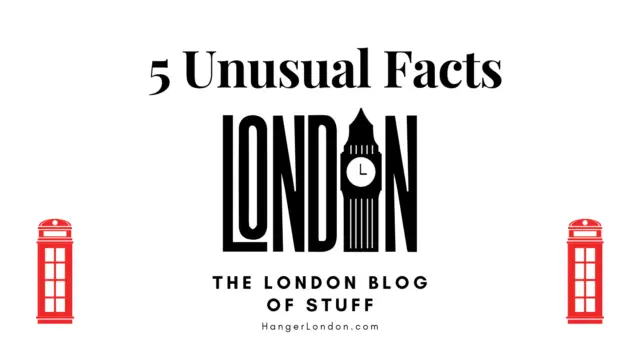London is a city of many layers, a melting pot of cultures, and an interwoven history. The city has been a hub of commerce, politics, and culture for centuries and attracts millions of tourists every year. While there are many well-known facts about London you will read, there are also a number of unusual facts that are lesser known but no less fascinating. In this blog post, we will explore some of these unusual facts about London.
London Bridge is Falling Down
London Bridge is one of the most famous bridges in the world, and it has a dark and gruesome history. Legend has it that the bridge was built on the site of an ancient Roman bridge and that the bones of the Roman soldiers who built it were buried beneath its foundations. However, the most unusual fact about London Bridge is that it was not the original London Bridge.
The original London Bridge was built by the Romans in AD 50, but it was replaced several times over the centuries. The current London Bridge was opened in 1973 and is made of concrete and steel. It may not be as glamorous as its predecessors, but it is certainly more durable.
The Great Stink of 1858
In the summer of 1858, the River Thames dried up. All the waste that was thrown in the river was left to create a terrible overpowering stench that accumulated throughout London. The smell that was so strong it drove people indoors and made them sick. This was known as the Great Stink.
Parliament only got involved in resolving public health as Great Stink affected parliament. The government created a temporary solution for itself by installing a large cotton screen over the windows of the Houses of Parliament to keep out the smell. Despite these efforts to protect the Parliament building, the government was moved to act.
At the time, the River Thames was essentially an open sewer, and the stench was so bad that Parliament had to be evacuated. It was only after this event that the government finally took action and built a new sewage system to deal with the city’s waste.
The government commissioned civil engineer Joseph Bazalgette to build a sewage system for the city. Bazalgette’s solution was to build a network of sewers that would transport waste away from the city to treatment plants. His system was revolutionary and is still in use today.
The construction of the sewage system took ten years to complete, but it was worth the effort. It had a significant impact on public health by reducing the spread of diseases such as cholera and typhoid. The sewage system also improved the quality of the Thames, which had been heavily polluted for years.
The Great Stink of 1858 was a turning point in London’s history. It forced the government to take action to improve public health and the environment. It was a catalyst for the construction of modern sewage systems, which are now standard in cities around the world. The Great Stink is a reminder of the consequences of neglecting the environment and the importance of investing in infrastructure for the public good.
The London Stone
The London Stone is a mysterious and ancient artifact that has been a fixture of the city of London for centuries. The stone is a large block of limestone, roughly 20 inches by 12 inches by 11 inches, that has been embedded in the wall of a building on Cannon Street since the 1700s. Despite its unassuming appearance, the London Stone has played a significant role in the history and mythology of the city.
One of the most intriguing aspects of the London Stone is its origins. No one knows exactly where the stone came from or how old it is, but it is believed to have been a sacred object for the pre-Roman inhabitants of the area. Some legends suggest that the stone was brought to London by the legendary King Brutus, who founded the city after defeating the giants who lived there. Other stories claim that the stone was used as an altar by the Druids, or that it was a marker for a sacred site.
According to legend, the fate of London is tied to the London Stone, and if it is ever moved, the city will fall. The stone has been moved several times over the years, and it is now housed in a small alcove in the wall of a building on Cannon Street.
Today, the London Stone is a protected monument, and is considered an important part of London’s history and culture. It is a reminder of the city’s ancient past, and of the enduring power of myth and legend. Visitors to London can still see the stone for themselves, and perhaps even touch it for good luck. For anyone interested in the history and mythology of London, the London Stone is an essential piece of the puzzle.
The Tower Ravens
The Tower of London is one of the most famous landmarks in London, and it is home to a group of unusual residents – the Tower Ravens. According to legend, if the ravens ever leave the Tower, the kingdom will fall.
To prevent this from happening, the ravens are cared for by the Yeoman Warders, who ensure that they are well-fed and looked after. There are currently seven ravens living in the Tower, and they are a popular attraction for tourists.

The Roman Amphitheatre
London’s Roman history is well documented, but one of the most unusual facts about the city’s Roman past is the discovery of a Roman amphitheater in the heart of the financial district. The amphitheater was discovered during construction work in the 1980s and is believed to have been built in the second century AD.
It is thought that the amphitheater could have held up to 6,000 people and would have been used for gladiatorial contests and other public spectacles. Today, the remains of the amphitheater can be seen in the basement of the Guildhall Art Gallery.
In conclusion, London is a city full of surprises, and these unusual facts are just the tip of the iceberg. From its gruesome past to its quirky traditions, there is always something new to discover in this vibrant and fascinating city.







